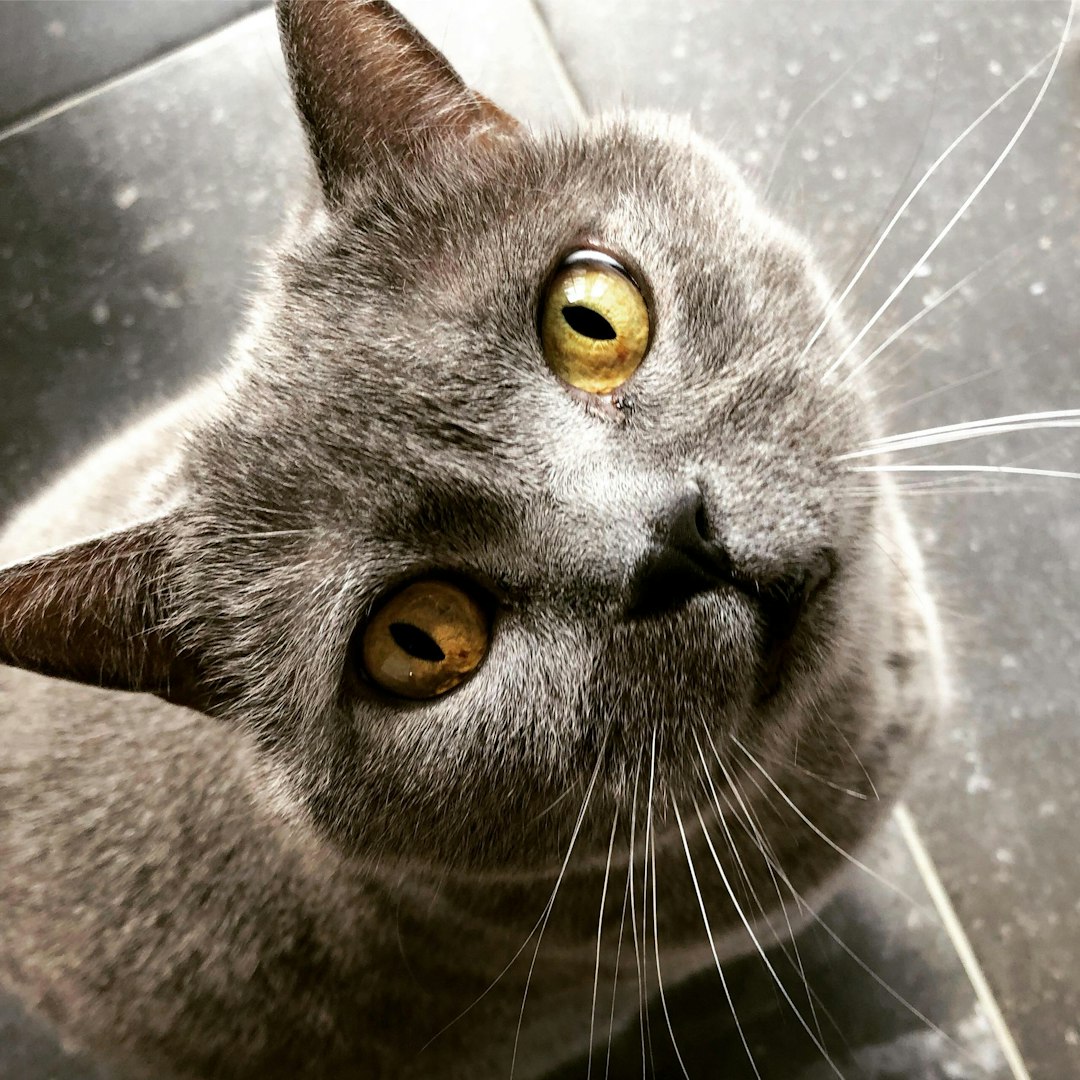Tapeworms are a common yet troubling parasite that can affect your feline friend, leading to discomfort and health issues. Understanding how these parasites invade your cat, the symptoms to watch for, and the treatment options available empowers cat owners to take proactive measures. As you delve into the details of a "tapeworm cat," you’ll learn about effective prevention strategies and the importance of regular veterinary check-ups to keep your pet healthy and happy. This knowledge not only ensures your cat’s well-being but also enhances the bond you share with your furry companion.
What are Tapeworms and How Do Cats Get Infected?
Tapeworms are flat, ribbon-like parasites that infest the intestines of cats. These worms consist of segments called proglottids, which can break off and be expelled in the cat’s feces, often making their way into the environment.
Common types of tapeworms in cats include:
- Dipylidium caninum: Often transmitted through fleas.
- Taenia spp.: Usually acquired from eating infected rodents.
How Do Cats Get Infected?
Cats typically become infected with a tapeworm cat through several routes:
- Flea Ingestion: Cats groom themselves, ingesting fleas that carry the tapeworm larvae.
- Eating Infected Animals: Hunting and eating rodents or birds can expose cats to tapeworm eggs.
- Contaminated Environment: Cats may come into contact with infected feces that contain tapeworm eggs.
Understanding these transmission methods is crucial for prevention, as it enables cat owners to implement effective control measures, such as maintaining a flea-free environment.

Common Symptoms of Tapeworms in Cats
Identifying a tapeworm cat can be challenging, but several signs can help you recognize an infection. Watch for the following common symptoms:
- Weight Loss: Despite a healthy appetite, your cat may lose weight due to nutrient absorption issues.
- Increased Appetite: A tapeworm cat may seem constantly hungry as the parasite consumes the food meant for your cat.
- Visible Segments: You might notice small, rice-like segments near the cat’s rear or in its feces—these are tapeworm eggs.
- Flea Infestation: Since cats typically contract tapeworms from ingesting fleas, a flea infestation can indicate a potential tapeworm issue.
- Lethargy: Infected cats may appear more tired or withdrawn than usual.
Comparison Table of Symptoms
| Symptom | Explanation |
|---|---|
| Weight Loss | Loss of nutrients due to parasite absorption |
| Increased Appetite | Body’s attempt to compensate for nutrient loss |
| Visible Segments | Sign of tapeworm segments in feces |
| Flea Infestation | Link between fleas and tapeworm transmission |
| Lethargy | Decreased energy levels in infected cats |
If you observe one or more of these signs in your cat, it may indicate a tapeworm cat infection, making it essential to consult a veterinarian for diagnosis and treatment.
Diagnosing Tapeworms in Feline Patients
Diagnosing a tapeworm cat infection involves several steps, ensuring your feline friend receives the appropriate treatment. Here’s how veterinarians typically confirm the presence of tapeworms:
Veterinary Examination: A thorough physical exam often reveals signs of infestation.
Fecal Analysis:
- A fecal sample is analyzed under a microscope to detect tapeworm segments or eggs.
Visual Identification:
- You may notice white, rice-like segments around your cat’s anus or in their feces, indicating a tapeworm cat issue.
History and Symptoms:
- Provide the vet with notes on any symptoms, such as weight loss, increased appetite, or vomiting. This background can aid in diagnosing the problem.
Comparison of Diagnosis Methods
| Method | Description | Effectiveness |
|---|---|---|
| Veterinary Examination | Physical signs of tapeworms | High |
| Fecal Analysis | Detecting eggs/segments in feces | Very High |
| Visual Identification | Finding segments near anus | Moderate |
By combining these methods, veterinarians can effectively diagnose a tapeworm cat infection and recommend the best course of treatment.
How to Treat Tapeworms in Cats
Treating a tapeworm cat infection requires careful attention to ensure your feline friend recovers quickly. Here are the common treatment options:
Veterinary Medications:
- Your vet will prescribe deworming medications such as praziquantel or fenbendazole. These are highly effective in eliminating tapeworms.
Dosing:
- Cats typically receive a single dose or follow-up doses depending on the severity of the infection. Always follow your veterinarian’s instructions for the correct dosage.
Environmental Cleaning:
- Clean your cat’s living area to prevent re-infection.
- Vacuum carpets, bedding, and furniture.
- Dispose of any feces promptly.
- Clean your cat’s living area to prevent re-infection.
Monitor for Symptoms:
- After treatment, keep an eye on your cat for any recurring symptoms like weight loss or changes in appetite.
Consider Regular Deworming:
- Speak with your vet about a preventive treatment plan to keep your tapeworm cat free from future infections.
By addressing both the infection and its environment, you can help ensure a tapeworm-free life for your feline companion.

Preventing Tapeworm Infections in Cats
Preventing a tapeworm cat infection requires a proactive approach. Here are several effective strategies to help keep your feline friend safe:
Regular Deworming: Schedule routine deworming treatments with your veterinarian. This should be part of your cat’s wellness check-ups.
Maintain Cleanliness: Keep your cat’s living environment clean. Regularly vacuum and sanitize areas where your cat spends time, especially litter boxes.
Watch Their Diet: Feed your cat high-quality, well-balanced cat food. Avoid giving raw meat or fish, as these can harbor tapeworm eggs.
Limit Outdoor Access: If possible, keep your cat indoors. Outdoor cats are at a higher risk of encountering infected fleas or rodents.
Flea Control: Invest in a reliable flea prevention program. Since fleas can transmit tapeworms, controlling them is crucial.
Monitor Hunting Behavior: If your cat is an outdoor hunter, be mindful of the animals they catch. Rodents and birds can be sources of tapeworms.
By implementing these preventive measures, you can significantly reduce the risk of your cat contracting a tapeworm infection, ensuring their health and well-being.
The Importance of Regular Veterinary Check-ups
Regular veterinary check-ups play a crucial role in maintaining your cat’s health, particularly in preventing and identifying a tapeworm cat infection early on. Routine exams not only foster overall well-being but also help in managing and preventing specific parasitic infestations.
Here are some reasons why these check-ups are essential:
- Early Detection: Vets can spot signs of tapeworms, such as weight loss or irritations, before they become severe.
- Health Monitoring: Frequent visits allow for consistent monitoring of your cat’s health, ensuring they are free from parasites like tapeworms.
- Preventive Care: Vets provide advice on deworming schedules and other preventive measures to avoid future infections.
- Customized Treatment Plans: If a tapeworm cat is diagnosed, your veterinarian can create an effective and personalized treatment plan tailored to your cat’s needs.
In conclusion, regular veterinary check-ups are indispensable. They not only help catch issues like tapeworms in cats early but also ensure your feline friend remains healthy and vibrant. Prioritize these visits for a happy, healthy cat!
Home Remedies and Alternatives for Tapeworm Treatment
While it’s always advisable to consult a veterinarian for treating a tapeworm cat, some pet owners may consider home remedies as complementary solutions. Here are a few approaches that may help support your cat’s health while dealing with tapeworms:
- Pumpkin Seeds: These seeds contain an amino acid called cucurbitacin, which may help paralyze tapeworms, allowing for easier elimination.
- Diatomaceous Earth: Food-grade diatomaceous earth can potentially disrupt the tapeworm’s outer layer, aiding in its removal when ingested.
- Garlic: Known for its natural anti-parasitic properties, garlic in small amounts may help combat tapeworms. However, be cautious, as excessive garlic can be toxic to cats.
Important Considerations:
- Always consult your vet before starting any home remedies.
- Monitor your cat closely for any side effects or allergic reactions.
While these home remedies can assist, they should not replace professional treatments. Always prioritize veterinary care for a tapeworm cat to ensure effective and safe management of the infection.

When to Seek Emergency Care for Your Cat
Understanding when to seek emergency care for your cat with a tapeworm cat infection is vital for ensuring their well-being. Although tapeworms are often manageable, certain signs suggest your cat may require immediate veterinary attention:
- Extreme lethargy: If your cat shows a sudden lack of energy and refuses to engage in normal activities.
- Severe vomiting: Frequent vomiting can lead to dehydration, which is particularly dangerous.
- Diarrhea: Intense or bloody diarrhea indicates a more serious issue that needs prompt evaluation.
- Loss of appetite: If your cat suddenly stops eating, it might signal a significant health problem.
- Weight loss: Sudden weight loss, despite normal eating habits, signals potential complications.
In general, if you observe any combination of these symptoms or notice changes in your tapeworm cat’s behavior, contact your veterinarian immediately. Early intervention often leads to better outcomes, ensuring your furry friend stays healthy and happy. Remember, timely care is paramount in addressing health concerns effectively.
Frequently Asked Questions
What are the common symptoms of tapeworms in cats?
Tapeworms in cats commonly present several symptoms, which may include weight loss despite a normal or increased appetite, the presence of rice-like segments around the cat’s anal area, excessive grooming of the region, and potential irritability. Some cats may also show signs of discomfort, such as vomiting or increased lethargy. In severe cases, cats can develop intestinal blockages, which would necessitate immediate veterinary attention.
How do cats contract tapeworms?
Cats typically contract tapeworms through the ingestion of infected fleas or by consuming rodents that have the larvae. Fleas are the most common intermediate host for the larvae of tapeworms. When a cat grooms itself and inadvertently ingests fleas, the tapeworm eggs can be transferred to its intestines, leading to infestation. Outdoor cats are particularly at risk due to their potential contact with fleas and wildlife.
What treatment options are available for cats with tapeworms?
Treatment options for cats with tapeworms generally involve the administration of deworming medications prescribed by a veterinarian. Common medications include praziquantel and fenbendazole, which effectively eliminate tapeworms from the cat’s system. Follow-up treatments may be necessary to ensure the complete eradication of the parasites. Additionally, addressing the underlying cause, such as flea control, is essential to prevent re-infestation.
Can tapeworms in cats be prevented?
Preventing tapeworms in cats largely revolves around effective flea control and maintaining good hygiene. Regularly administering preventive flea treatments can significantly reduce the risk of tapeworm transmission, as fleas are the primary carriers of the larvae. It’s also beneficial to monitor your cat’s environment for potential sources of infection, such as rodents, and to conduct regular health check-ups with a veterinarian.



